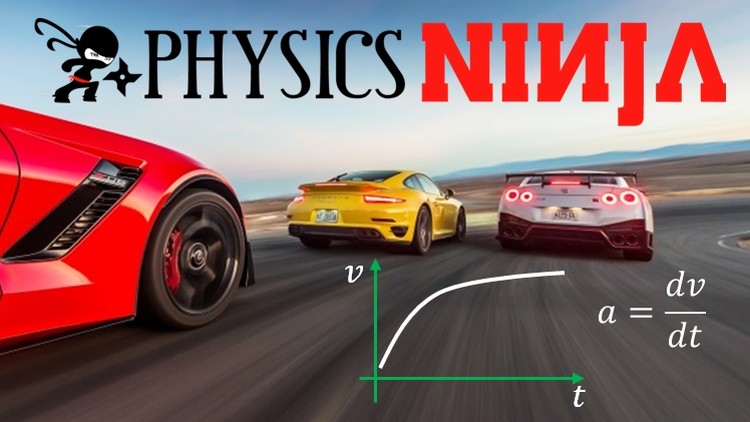Physics 100: Mastering Kinematics
A complete course with lectures, concepts, and tutorials on how to solve problems.
What you’ll learn
Physics 100: Mastering Kinematics
- They will learn how to solve any and all two-dimensional kinematics problems that they come across in the class.
- Use kinematics equations and solve graphical problems with ease.
- Develop a plan to deal with kinematic problems.
- People who want to learn how to solve relative motion problems, like how to cross a river, should study this.
Requirements
-
Basic Algebra and a little bit of basic calculus
Description
This class covers everything you need to know about one and two-dimensional kinematics, and it also gives you the groundwork for learning about other things in math. If you’re taking an introductory physics class at college or university, this class is for you. It’s good for high school students who want to get good grades, as well as college and university students who want to get good grades. Students will learn how to use equations and graphs to figure out how an object moves. I will show you how to deal with problems and help you come up with your own problem-solving strategies so that you can become a better problem solver in the long run.
1) This is the first part.
- Scientific proof.
- Moving units.
- Problem-solving by looking at dimensions.
- Prefixes.
- Each topic has some examples of problems.
2) Kinematics in one dimension: 1D Kinematics
- Understanding the difference between displacement and how far you’ve gone.
- As a comparison, look at how quickly you move over time.
- Instantaneous acceleration vs. the average rate of acceleration
- Kinematic equations for motion with constant acceleration: The BIG 5 equations.
- Kinematic equations are used to solve problems.
- Using graphs to figure out how to do something.
- “Free Fall”
- Gravity is something that you need to learn about in order to
- It is important to be able to read graphs (position vs time, velocity vs time, and acceleration vs time).
- Use velocity graphs to figure out how far you’ve moved.
- Calculating speed from acceleration graphs
- +30 problems that have been explained in full
Finally, we’ll talk about Kinematics in 3D.
- Learn how to use kinematic equations to figure out how two-dimensional motion works.
- Analyze how objects that are launched horizontally move.
- It can be done to look at the movement of a projectile that is launched at any angle.
- Determine how far the projectile can go and how high it can go. Also, figure out the time of flight.
- A list of 10 problems and solutions that have been fully explained.
4) Motion in 1D and 2D that is similar
- Definition of relative speed.
- Learn how to figure out how fast different objects move in relation to each other.
- In one dimension, there are objects moving on airport walkways.
- 2D Relative motion problems: problems with crossing a river in this case.
It’s a good time to learn.
He is the Physics Ninja and a very good teacher of both the subject of physics and math.
Who this course is for:
- In the beginning of their first year of physics and engineering, as well as for students who took AP Physics,
- Anyone who wants to learn how to solve kinematic problems should read this book now.
- Final exams or the MCAT are coming up for students.
Physics 100: Mastering Kinematics
The Mathematical Beauty that led to Quantum Physics
Download Now









